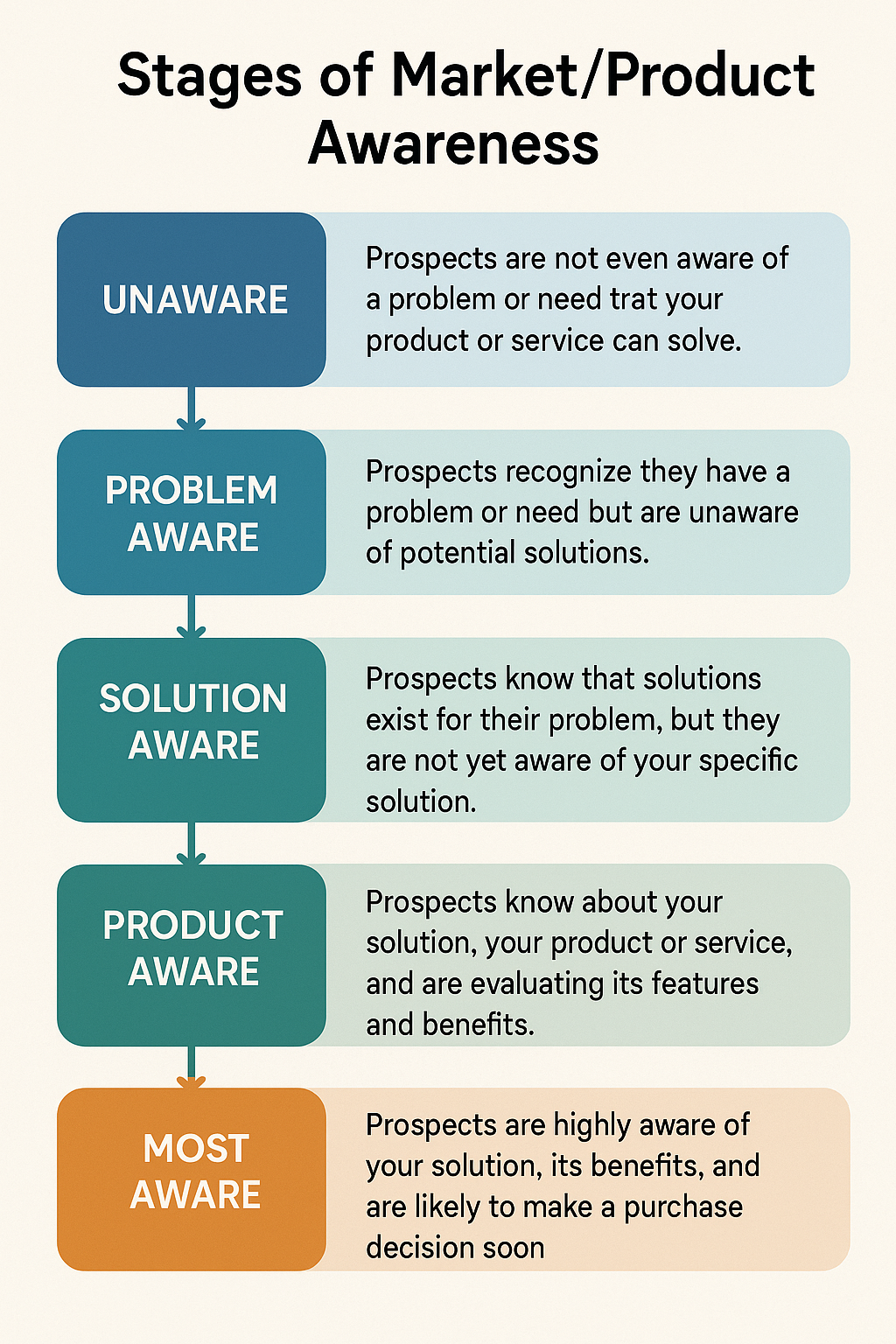In the world of direct response marketing, writing effective copy isn’t just about catchy headlines or clever hooks. One of the biggest mistakes even seasoned copywriters make is speaking to the wrong audience. Over the years I’ve reviewed thousands of ads and sales funnels, and I’ve noticed that misaligned messaging often sinks otherwise great offers. This problem is tied to product‑market awareness—an idea that has been around since the 1960s but is more relevant than ever in 2025.
Table of Contents
A Real‑World Case Study
Consider a recent example from the Copy Accelerator Pro Mastermind. A member developed a clever, legitimate offer showing women how to earn extra money simply by scrolling on their phones. The offer has broad appeal and realistic income claims ($75–$150 extra a month), making it perfect for stay‑at‑home moms, retirees, and twenty‑somethings looking for a little extra cash. Yet the ads promoting this offer were destined to flop because the copy was written for a solution‑aware audience rather than the problem‑aware women who make up the bulk of the market.
Speaking to the Wrong Audience
Here’s how the ads started:
- “I don’t mean to sound rude… but if you’re still looking into things like affiliate marketing, selling stuff on Amazon or dancing on TikTok to make extra money… you’re making a big mistake.”
- “What if I told you there was a way to build a second income that covers all your major expenses every month… without any of the headaches that come up with starting a traditional online side hustle…”
These leads assume that the reader is deeply familiar with online side hustles like affiliate marketing, dropshipping or webinars. In reality, most of the women who would be interested in this offer aren’t intimately familiar with those terms. They might have heard of “side hustles” in passing, but their biggest pain points are far more concrete:
- “We’re going to Disney next month and I really want to buy the Lightning Passes but they’re so expensive.”
- “I’m sick of feeling anxious about my car payment.”
- “I’d love to go wine tasting with my girlfriends, but I just went to New York and should be saving money.”
- “When did back‑to‑school supplies start costing so much?”
By focusing on gurus, webinars and failed side hustles, the ads miss the mark and fail to connect with the actual concerns of the audience.
Understanding Product‑Market Awareness
Product‑market awareness describes how familiar your prospect is with the problem, the available solutions and your specific product. Eugene Schwartz described five levels: unaware, problem aware, solution aware, product aware and most aware. Someone who is product‑aware needs little education—you simply need to prove your offer is the best. But when your audience is only vaguely problem‑aware, you must start by acknowledging their pain points, educating them about the root cause and explaining why your solution is different.
In our case study, the target audience is problem‑aware: they know they need extra money but aren’t familiar with affiliate marketing, dropshipping or other online business models. Ads aimed at solution‑aware prospects will confuse or alienate them. To reach them effectively, the copy must speak to their everyday frustrations, introduce the concept of earning side‑income by scrolling on their phones and build curiosity about how it works.
Lessons for Copywriters
The misalignment in this case study illustrates why product‑market awareness should drive every aspect of your funnel. When you tailor your message to the correct awareness level:
- You build rapport by acknowledging the prospect’s real problems.
- You create curiosity by hinting at a solution they haven’t tried.
- You spend the right amount of time educating versus persuading.
- You select appropriate assets—short ads and simple product pages for most‑aware prospects, or longer VSLs and advertorials for problem‑aware prospects.
Copywriters at every level should revisit this framework regularly. Even well‑known marketers sometimes fall into the trap of speaking to the wrong audience. Taking the time to identify your prospect’s awareness level will improve your conversion rates and ensure that your great offer doesn’t get lost in translation.
Conclusion
Product‑market awareness may be an old concept, but it’s essential to modern marketing. As this case study shows, even a clever offer can fail when the copy assumes too much knowledge. In 2025, when attention spans are short and competition is fierce, taking the time to understand where your prospects are on the awareness spectrum will help you craft copy that resonates, builds curiosity and drives action.

0 Comments